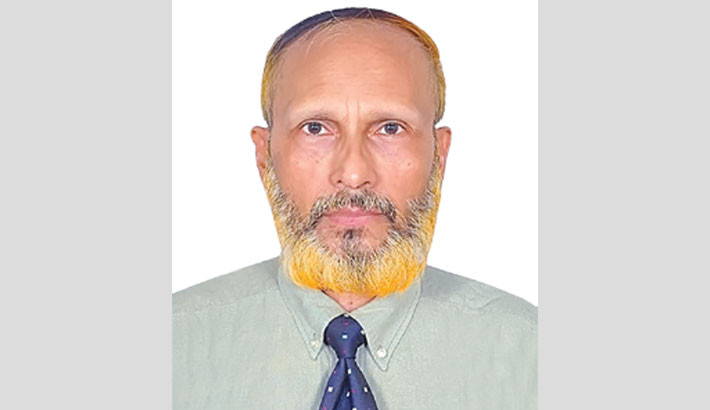
Masum Billah
193 member states of the UN unanimously took the SDG in 2015 to fulfil it by 2030. Keeping pace with this promise, the government of Bangladesh has taken various steps to achieve the goals within the stipulated time. The fourth goal talks about inclusive and quality education based on equality and life-long learning. However, doubt has surfaced about whether Bangladesh will be able to achieve the goals by 2030 as its education sector still stands on an unsteady situation.
By 2030, relevant and fruitful education for all boys and girls based on equity and quality is to be ensured, as sub-component 4.1 under SDG-4 says. However, free education in Bangladesh is still limited to primary level and with questionable quality. In the secondary level, only a small number of schools are government and 97 per cent are non-government. Many say that the prevailing education of different streams stands as an obstacle to equity and quality in both primary and secondary levels.
The current situation of education in Bangladesh indicates that it would be difficult to achieve the goals of SDG. Education of different streams and weak state planning prove to be big challenges. Primary education divided into eleven kinds makes it discriminatory. A child’s thoughtful process and base of competency start developing from primary education. When they see discrimination at this stage, it creates an impression on their overall education and life. Some teachers and educators opine that the government should issue a circular so that all types of primary schools receive the same type of education to avoid discrimination that exerts permanent impact on young children. This suggestion, however, does not seem convincing as the social system itself has caused it. A group of people whose children must receive a global type of education cannot think of sending them to religion-based or Bengali-medium institutions. Hence, English medium schools have sprung up. On the other hand, another group can never think of sending their children to English medium schools except to religious ones (madrasas). The government cannot compel them to receive similar education either. Some NGOs run primary schools where government effort hardly reaches. They follow a mixed curriculum to make children smarter suited to their living standard. To establish a bridge among various types of primary schools, some specific subjects highlighting Bengali culture and history can be made compulsory for all streams.

The National Education Policy 2010 says that the same curriculum should be introduced for all at the primary level, which has not been implemented yet. We have government primary schools, non-government schools, kindergartens, schools attached to high schools, ebtedayee madrasah, madrasas attached to high madrasas, NGO-run schools, children welfare trust schools, Qawmi madrasas, and English medium schools. Government primary schools and schools attached to government high schools follow the general education curriculum. But non-government schools, kindergartens, and NGO-run schools use additional books beyond the general curriculum. Ebtedayee madrasah follows a separate curriculum approved by the government, known as the ‘general madrasa’ curriculum that gives special emphasis on religious education. However, Qawmi madrasas and English medium schools follow their own curriculum and assessment system. In Qawmi madrasa, Holy Quran and Hadith learning are given a greater emphasis.
This difference of curriculum and institutions prevails in the secondary level too. Broadly six types of institutions exist—government secondary, non-government secondary, technical, ebtedayee madrasah, Qawmi madrasa and English medium. In most government and non-government schools, the government-approved curriculum is followed, known as ‘general curriculum’. Some non-government schools use extra books beyond that. In the secondary level the rate of dropout registers comparatively higher.
BANBEIS reports show that in the last 50 years 12 thousand 268 non-government educational institutions have been established, while only 496 government ones have been built, 317 of which were nationalised between 2011 and 2023. Though nationalised, quality education and a suitable atmosphere have not been created because of lack of proper planning. The 2010 education policy suggested a teacher-student ratio of 1:30, which could not be implemented. Due to problems like poor infrastructure and sanitation, guardians prefer non-government schools. As these schools fail to cater to the needs of the students, they go to coaching centres ignoring classroom teaching, increasing the cost of education.
To address these issues in primary and secondary levels and to achieve the SDG goals by 2030, the number of government secondary schools should be increased and existing ones must be upgraded. The frustrating situation of government primary schools makes us doubtful about whether we will be able to achieve the SDG goals by making education free up to secondary level like primary. Recently, non-government teachers’ have demonstrated to press home their demand for increasing house rent allowance. When the government allocation for education still stands as the lowest among South Asian states, can we really expect to achieve the SDG goals by the stipulated time? If not, what will be the status of education? Should not our political parties have an agenda regarding the matter?
______________________________________
The writer is the President, English Teachers’ Association of Bangladesh. He can be reached at [email protected]

